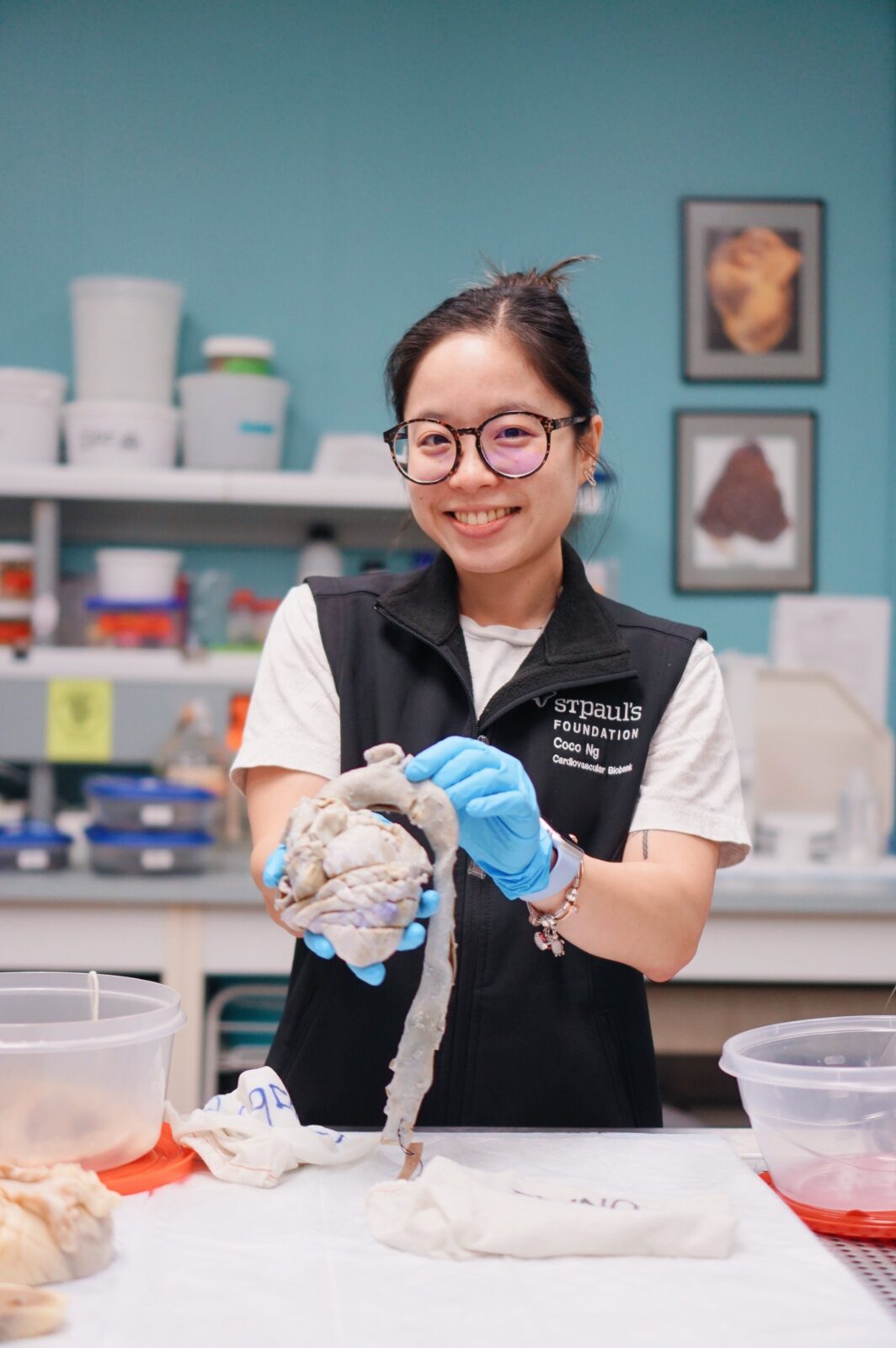This article is part 2 of a 2-part series. Read part 1: What Happens to a Human Heart After Transplant?
Back to… The Day of the Reunion
2:00 PM – THE VISIT
Two months post-transplant, we arrange for Asher to visit the heart biobank. My body buzzes with anticipation and excitement for the patient and their family. They enter our biobank, a mixture of grief, curiosity, and wariness etched on their faces. The feelings I have are mutual. This moment is their first time seeing their own heart, and it is my first time witnessing someone holding their own heart.
Asher is one of on average 25 heart transplant recipients per year in BC. We walk them through the history of our biobank, our purpose, and what our goals as scientists are. We then show them images of their explanted heart taken fresh from collection. Asher recounts their transplant experience, remarking that it was like a fever dream – dreams known for their bizarre or surreal experiences.
“Are you ready?” I ask. “Here is your heart.”
2:30 PM – THE REUNION
As I unveil the heart, all eyes are drawn to the specimen table, with anticipation and apprehension for what they are about to witness. The heart rests silently, its heartbeat absent. A series of gasps slices through the silence in the heavy air. The atmosphere is tense with anguish, heartache, and awe. How do you comfort someone who has been through this experience? We illustrate to them how their disease manifested causing structural and functional changes to their heart, and eventually requiring a heart transplant. We also show them a healthy heart for comparison, demonstrating the stark physical differences.
At the heart biobank, we do not disclose any medical or clinical information to the patient; we only present information from a research point of view. “Do you want to hold it?” I ask.
2:50 PM – THE DONATION
Asher describes their last days with their old heart struggling to beat. They thought that the day of the operation might be their last day here on Earth. Some heart transplant patients may wait up to 2 years to receive a new heart; some, unfortunately, aren’t as lucky. They express how if it wasn’t for the generosity of the organ donor, they would not be alive today. The heartfelt appreciation from Asher and their family resonates throughout the biobank.
Upon realizing the generosity of their organ donor, Asher realized that they too could carry forward the act of donation. And so, they did, by providing informed consent for their old, explanted heart to remain at the heart biobank, for research.
Each heart holds its own history. Asher is only one of the hundreds of hearts we have here at the heart biobank. Thanks to Asher’s generous donation to the biobank, advancements in heart research can continue.
As a heart biobank technician, I work with and handle hearts daily – something that I have become accustomed to and that has become routine. But that day, witnessing Asher hold their own heart made me see things with a fresh perspective. Each heart has carried a life. This rewarding, therapeutic, and powerful experience highlighted the importance of organ donation for transplant and research – both healthy and diseased hearts have tremendous value for advancing research.
From the apex (bottom) of my heart, thank you for joining me on this journey!
Heartbeats and best wishes,
Coco Ng
If you are living in British Columbia, please register to be an organ donor here, it gives people like Asher a second chance at life.
- Read more about the Bruce McManus Cardiovascular Biobank.
- Read our story on the Biobank staff here.

Coco Ng stands holding a fixed, human heart in the BMCB laboratory space. Photo by Tiffany Chang.
